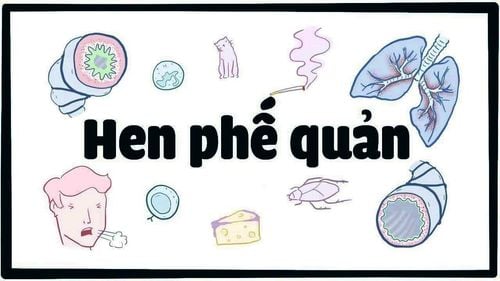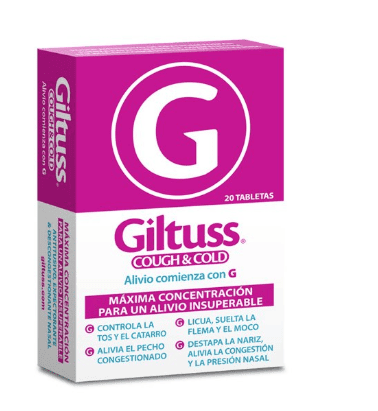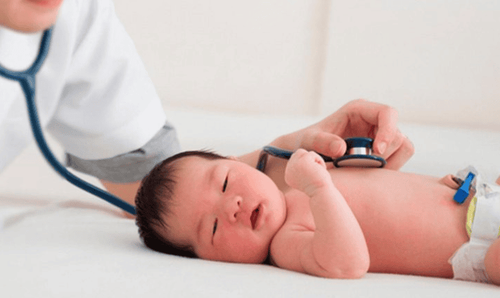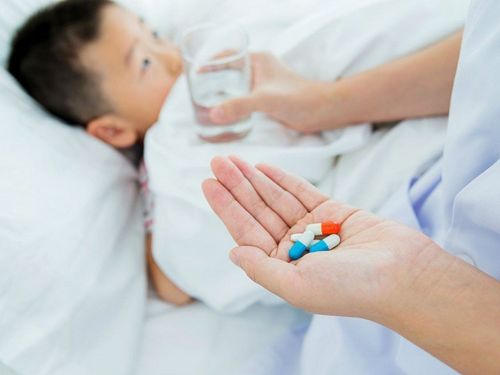This is an automatically translated article.
Bronchiolitis is a lung infection caused by mostly viruses, common in young children and infants causing inflammation and obstruction of the bronchioles of the lungs. The disease usually thrives in the winter with initial symptoms similar to the common cold but then progresses to coughing, wheezing and sometimes shortness of breath.1. Symptoms of acute bronchiolitis
During the first few days, the signs and symptoms of acute bronchiolitis are similar to those of a cold:Runny nose Congested nose Cough Mild fever (not always present) After this, it may be a week or more will lead to difficulty breathing or wheezing. Many infants will also develop otitis media with bronchiolitis.
If feeding or drinking becomes difficult and breathing becomes faster or the child is struggling to breathe, parents should take the child to a medical facility immediately, especially if the child is under 12 weeks old or has other medical conditions. Other risk factors for bronchiolitis, such as premature birth, heart disease, or lung disease.
In other cases, if the child has the following signs and symptoms, parents should also take the child to the doctor, such as:
Vomiting Wheezing Fast (60 beats/min) and shallow breathing labored breathing - ribs retract inward as infant inhales Slow or lethargic expression Refuses to drink enough or breathes too quickly that interferes with eating or drinking Skin turns blue (cyanotic), especially on lips and nails hand
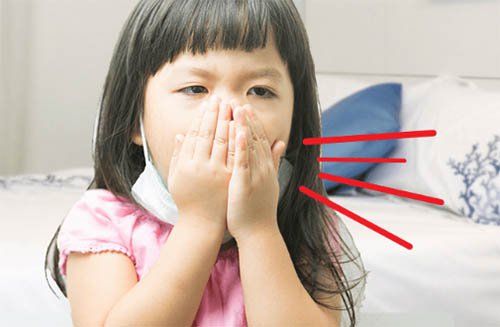
Trong vài ngày đầu, các dấu hiệu và triệu chứng của viêm tiểu phế quản cấp tương tự như cảm lạnh
2. Causes of acute bronchiolitis
Bronchitis occurs when a virus enters the bronchioles causing the bronchioles to swell and become inflamed, increasing mucus in these airways, making it difficult for air to flow freely in and out of the lungs. .Most cases of bronchiolitis are caused by respiratory syncytial virus (RSV). RSV is a common virus that causes an infection that is common in children under 2 years of age. Bronchiolitis can also be caused by other viruses, including those that cause the flu or the common cold. Newborns can be reinfected with RSV because at least two strains are present.
The viruses that cause bronchiolitis are very easily spread through droplets in the air when an infected person coughs, sneezes or talks. Or a child can get it by touching shared objects such as utensils, towels or toys and then rubbing their eyes, nose, or mouth.
3. Which children are susceptible to acute bronchiolitis?
Babies younger than 3 months of age are at greatest risk of developing acute bronchiolitis because their lungs and immune systems are not fully developed. Other factors that are associated with an increased risk of acute bronchitis in infancy or worsening include:Premature birth Heart disease or underlying lung disease Weakened immune system Exposure to second-hand smoke leaves Not being exclusively breastfed Living in a crowded environment such as kindergartens, large families Having siblings who go to school and bring the virus home
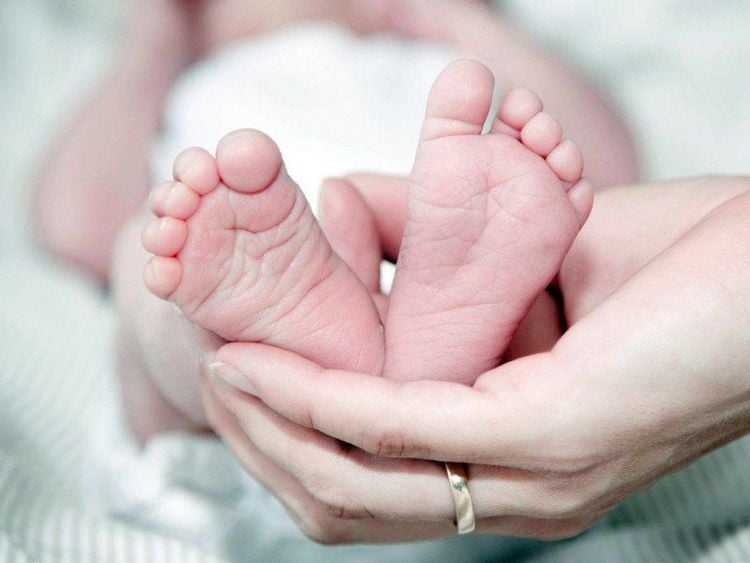
Trẻ nhỏ dưới 3 tháng tuổi có nguy cơ bị viêm tiểu phế quản cấp cao nhất
4. Complications of bronchiolitis
Complications of severe bronchitis can include:Cyanosis due to lack of oxygen. Apnea is common in premature infants and infants within the first two months of life. Loss of water. Low oxygen levels and respiratory failure. The child will have to be treated in the hospital, if the respiratory failure is severe, the doctor will have to intubate, this is a technique of placing a breathing tube into the windpipe to help the child breathe, but the child is at risk of respiratory infections. steam.
5. Notes in the treatment of acute bronchiolitis in children
About treatment Treatment for acute bronchiolitis will depend on the symptoms, severity, age, and overall health of the child.In most cases, antibiotics should not be used to treat acute bronchitis, which is mostly viral. Even children who have a cough for longer than 8 to 10 days usually don't need antibiotics.
The goal of treatment is to help relieve symptoms including:
Get plenty of Acetaminophen or ibuprofen for fever and pain relief Cough medicine for children over 4 years of age. Add enough fluids Put a humidifier in your child's room to clean the air. Parents should consult a doctor before using over-the-counter cough and cold medicines for children by the American Academy of Pediatrics. The American Academy of Pediatrics does not recommend these medicines for children under 4 years of age because they can cause harmful side effects to the health of young children. For children ages 4 to 6, use over-the-counter products only when recommended by your doctor. In addition, in most cases, children also do not need to use antihistamines that make coughs worse.
Do not give aspirin or aspirin-containing medicines to patients under 19 years of age unless directed by a doctor. Using aspirin can put your child at risk of Reye's syndrome, which is a rare but very serious disorder. Reye's syndrome is a disease that primarily causes acute brain damage (encephalopathy) and fatty degeneration of the liver (fatty liver) that usually begins shortly after recovery from an acute viral illness.

Không sử dụng aspirin hoặc thuốc có chứa aspirin cho người bệnh dưới 19 tuổi
Humidify the air. If the air in your child's room is dry, a humidifier or nebulizer can humidify the air and help relieve stuffy noses and coughs. However, parents should regularly clean the humidifier to prevent bacteria and mold growth. Another way to humidify the air is to take a hot shower or bath in the bathroom and let the hot water evaporate in the bathroom, sitting a child or a parent holding the child for about 15 minutes can help relieve a cough. Keeping your baby upright makes breathing easier. Give your child enough water to drink. To prevent dehydration, give your child enough fluids, such as water or juice. Note, parents should let children drink slower than usual, because sick children easily choke due to respiratory irritation leading to coughing. Use saline nasal drops to relieve nasal congestion. Parents can buy saline nasal rinse at drugstores. It is effective, safe and hypoallergenic, even for children. To use, parents should put a few drops into one nostril, then immediately put the nasal aspirator into that nostril to get the saline out, note that parents should not push the nasal aspirator deep into the nose. nose. Repeat in the other nostril. If your child is older, teach them how to blow their nose. Use over-the-counter pain relievers to treat fever or pain, but consider giving your child over-the-counter fever reducers and pain relievers such as acetaminophen (eg Tylenol) or ibuprofen (eg Advil) , Motrin) as an alternative to aspirin. Use caution when giving aspirin to children or adolescents. Although aspirin is approved for use in children older than 3 years, children and adolescents recovering from chickenpox or flu-like symptoms should never take aspirin. Maintain a smoke-free environment. Secondhand smoke can worsen the infectious symptoms of acute bronchiolitis in children. If a family member smokes, ask him or her to go outside the house or car to smoke.
Please dial HOTLINE for more information or register for an appointment HERE. Download MyVinmec app to make appointments faster and to manage your bookings easily.





